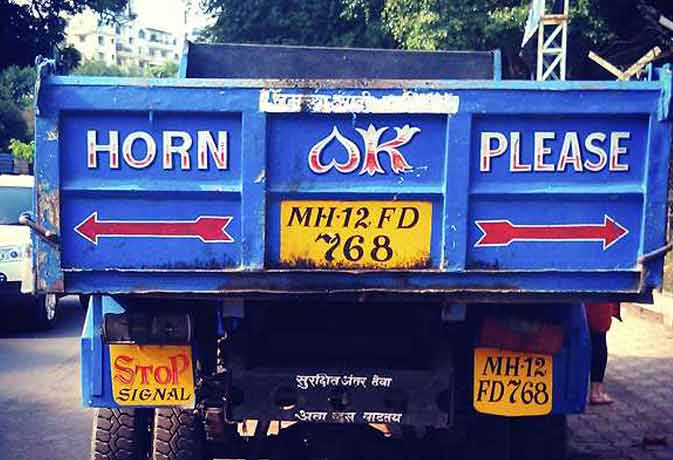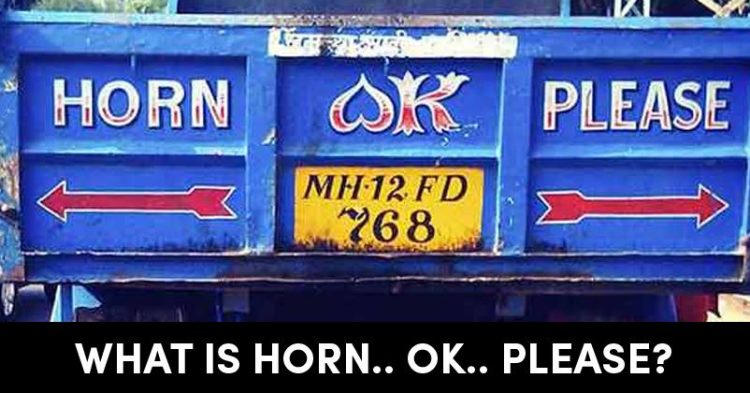How many times have we noticed “Horn OK Please” written at the back of trucks in India? Almost all of them have it displayed and it is such a strange thing. Isn’t it? Have any of you wondered what it actually means?
Well, the not-so-a-sentence, if pondered over in sense of English Grammar, cannot only be there just to persuade the onlookers to honk hard? Well, let’s get into the highlights!

HORN OK PLEASE?
Forbes published Kenneth Rapoza’s piece that explained that the truck drivers, instead of taking help from the side mirrors, use the horns while indicating the fact that they are going to overtake the car now.
On the same note, there are trucks that do not really have side mirrors. The HORN OK PLEASE boldly printed at the back of the truck is to indicate the car behind it that it should blow the horn if it is going to overtake the truck, as a signal!

Significance Of OK?
HORN PLEASE is still understandable but what is OK doing in between the both? So, one of the reasons that implies here is that if you are behind the truck and can see OK written clearly, it means you are at an acceptable and safe distance with the truck.
Another reason for OK is explained by telling the definition of the acronym which is “On Kerosene” which warns the drivers behind the truck to maintain distance. At the time of World War II, the truck drivers used to mix diesel and kerosene to save money on gas.
One more theory defines the OK as the detergent’s name launched by TATA Group in the ancient times, promoted by these trucks along with a lotus sign print. Makes Sense?
A Twitter post regarding the same has left a lot of people awe-struck!
The reason 'HORN OK PLEASE' on trucks seems grammatically incorrect is because it is. The 'Horn please' is separate from OK. OK apparently stands for On Kerosene which is what was used as cheap fuel when India faced diesel shortages during WWII. The more you know. pic.twitter.com/17jMcX3iJn
— Floyd (@floydian_sleep) February 3, 2020
Enlightened Enough?
Source: Scoopwhoop
















